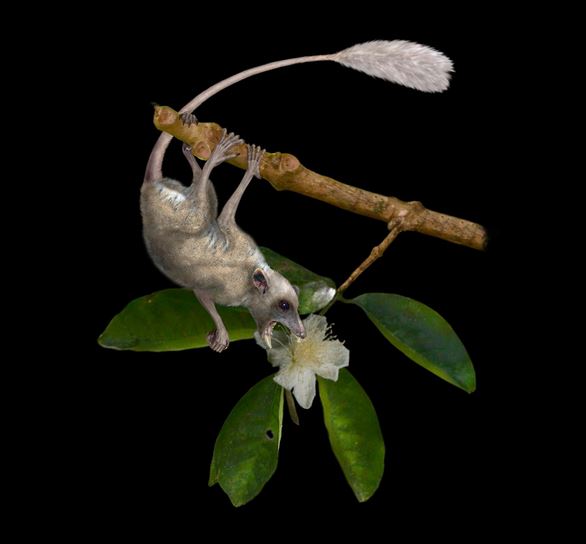When we think of our earliest primate ancestors we do not think of tree-dwelling creatures that looked like squirrels or shrews and weighed less than a pack of playing cards. However, a new study suggests that this is probably what they were like.
New ankle bone fossils found in an area of Montana, USA, where the Tyrannosaurus rex used to roam, provide the first evidence that our oldest primate ancestors lived in trees.
This finding may explain why early primates managed to succeed in evolution where others may have died off. Up in the trees they had access to food sources that other species couldn’t get to.
The study, which has been published in the online edition of PNAS (Proceedings of the National Academy of Sciences), describes the first bones below the skull of Purgatorius. The species had previously only been known by its teeth.

Researchers believe Purgatorius looked similar to Dryomomys szalayi, another shrew-like primitive primate discovered near Yellowstone National Park by co-author Jonathan Bloch. (Credit: llustration courtesy of Doug Boyer. Image: Eurekalert)
By analyzing the shape of its teeth, paleontologists determined that the tree shrew-like animal ate plants and insects. Researchers, however, knew very little about how the creature lived.
Lead author Stephen Chester, an assistant professor of anthropology at Brooklyn College, City University of New York, said the wide range of mobility in the joints of tiny Purgatorius’ ankle bones suggests it spent much of its time climbing trees and reaching for fruit at the edge of limbs. The animal was estimated to have weighed about 3.5 ounces (99.22 grams).
“These ankle bones have really unique characteristics that indicate a specific kind of mobility that we only find in primates and their closest relatives today. Early primates were using this high degree of mobility to access resources that other animals on the ground couldn’t reach.”
Early primates adapted to spread of flowering plants
Co-author, Jonathan Bloch, curator of vertebrate paleontology at the Florida Museum of Natural History, said the adaptations Purgatorius had for climbing trees support the idea that our earliest primate ancestors diversified at the same time flowering plants became prevalent.
Mr. Bloch said that unique adaptations to a changing environment led to the evolutionary success of the oldest primate ancestors.
Mr. Bloch added:
“While Purgatorius is found just after a dramatic extinction that includes all non-avian dinosaurs, the new fossils suggest that the divergence of primates from other mammals was a more subtle event.”
“The beginning of primate evolution involved small modifications of the skeleton, making it easier to move through trees and eat the fruits, flowers, and leaves that they encountered.”
Chester and Bloch came across the Purgatorius ankle bones among boxes full of fragmented unidentified fossils that had been gathered from the Garbani Channel sites in Montana by co-author William Clemens, a professor emeritus in the department of integrated biology at the University of California, Berkeley.
The area is well known for producing the unique specimen of T. rex.
Prof. Clemens said that Purgatorius’ ankle bones were found in the same area as its teeth, and compared with the ankles of later primates.
Prof. Clemens said:
“This discovery gives us an idea of what the rest of the animal looked like and what it could do. The take-home message is that arboreal life evolved early in the history of primates and is shared by most of their descendants.”
Prof. Chester explained that the further back in time you go, the more different earlier primates looked to what people today image, which can made it harder to identify the early ancestors of modern primates.
Co-author Douglas Boyer, an assistant professor of anthropology at Duke University, and Mr. Bloch have spent their careers identifying and uncovering fossilized skeletons of several species of early primates.
Mr. Bloch said:
“You couldn’t possibly have predicted this animal if you only looked at the types of mammals that are alive today. This is something you only find in the fossil record.”
Citation: “Oldest known euarchontan tarsals and affinities of Paleocene Purgatorius to Primates,” Stephen G. B. Chestera, Jonathan I. Bloch, Doug M. Boyer, and William A. Clemens. Proceedings of the National Academy of Sciences (PNAS). doi: 10.1073/pnas.1421707112.
